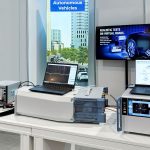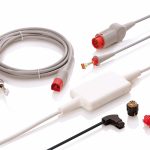By Roy Phillips, Managing Director, CryoCoax
Cryogenics can simply be defined as the branch of physics dealing with the production and effects of very low temperatures. Its early origins were in the late nineteenth century, when Faraday et al experimented with the liquefaction of various gases. Since then, the science has developed tremendously, to become a key engineering field, set to become an even bigger one in the near future, especially when it comes to quantum computing. Blue-chip companies the likes of IBM, Google, Microsoft, Amazon and Honeywell are all working on cracking the quantum puzzle – not to mention the governments of most of first-world economies pledging huge sums for such developments. The interest is not surprising, since cryogenics also has applications in the medical, space, defence, aerospace, education, test and measurement, biological research, chemistry and other sectors.
Superconductivity
The use of electronics, particularly RF, within cryogenic applications is especially interesting since it involves a phenomenon called superconductivity.
Superconductivity occurs within certain materials at ultra-low temperatures when a charge or signal moves through the material without resistance. The obvious benefits of this are a massive increase in capacity, speed, efficiency and the signal integrity of an RF system.
One of the biggest challenges in this market is the very narrow supply chain for the exotic materials required to manufacture cryogenic products and the technology that requires to combine components into a working system or sub-assembly. While not insurmountable, this remains the biggest challenge to successfully create manufacturable products with reliable and repeatable performance.
As conventional soldering is not possible with some cryogenic cable materials, Intelliconnect has designed an award-winning solderless connector and other low-temperature hardware to create assemblies that work to well below 2K (-271.15°C) at bandwidths to 40GHz.
Technical specifications, both electrical and mechanical are significantly different in the cryogenics world, which means product design engineers will work with scientists outside the customary world of electronics, which will present a new set of challenges in terms of both perception of risk and performance parameters. (e.g., extremely tight contact resistance parameters).
Intelliconnect has been involved in the design and manufacture of cryogenic cables, interconnects and sub-systems now since 2014, and despite the massive barriers to entry into this market, has become a market leader in both Europe and the US. The enormous investment in equipment and stock required was the first major hurdle. Specialised test equipment, self-designed manufacturing equipment, hugely expensive materials and even additional manufacturing space has had to be procured. A large network of university partnerships has helped immeasurably with product development and elevating technical expertise.
How it started
Back in 2014, Intelliconnect was approached by a leading UK exponent of cryogenic dilution refrigerators to supply RF cable assemblies made from various exotic materials – some superconducting, some not – required to work from room temperature down to mK levels. To this point the customer had been manufacturing the cable assemblies in-house, but wanted to outsource to an expert cable house. Whilst Intelliconnect had extensive experience in manufacturing many types of RF and cable products, it had never been involved with exotic cable materials such as Niobium Titanium, Cupro-Nickel, Beryllium Copper and Oxygen Free Copper. With the help of the customer, it sourced the cable, primarily from Japanese sources, and set about designing a range of connectors.
The first and most significant issue was that some of the cables, particularly Niobium Titanium, were impossible to solder to. The customer used a method of electroplating the ends of the cut cable to enable solderability. This was both expensive and time consuming as well as unreliable, so a new clamp/crimp methodology was developed, and Intelliconnect’s award-winning 2.92mm solder-free range was born. This proved successful, especially as the electrical performance in terms of return loss (VSWR) and insertion loss were equivalent or better than that of soldered connectors.
After a short time successfully making and supplying cable assemblies, the customer asked Intelliconnect to look at making the sub-system that the cables populated. This involved a whole new set of challenges with designing and sourcing a variety of products that would work effectively at extremely cold temperatures. Precision metal plates, attenuators, waterproof adaptors, hermetic seals, enclosures and a slew of other highly-specialised components were designed or sourced, production layouts were compiled and a significant number of jigs and manufacturing and test equipment purchased. A new production cell was set up, and operators trained to meet customer needs.
Unforeseen issue tackled
Another unforeseen issue was packaging. The units that were built were extremely fragile and much larger than usual, so special packaging was built for safe, secure transit. Ultimately, after a few teething problems, the customer was very happy with the product’s quality improvement, and delighted with a nearly 50% cost-saving from manufacturing in house. This has provided a catalyst for a huge expansion in Intelliconnect’s involvement in this exciting industry across the globe, with many blue-chip customers and an ever-expanding product range and a cryogenics-focused subsidiary, CryoCoax.
CryoCoax is a member of the British Cryogenics Council, the Cryogenics Society of Europe and the Cryogenics Society of America. An ISO9001 manufacturer, CryoCoax is also SC21-accredited to a Silver standard. SC21 is a business quality and improvement qualification designed to provide a continuous improvement programme and assure supply chain performance. Silver Award proves > 96% on-time delivery and 99.5% quality.










